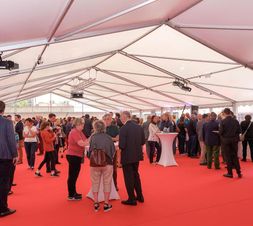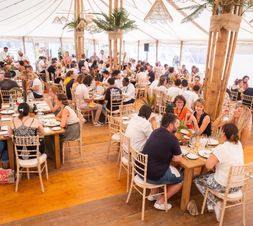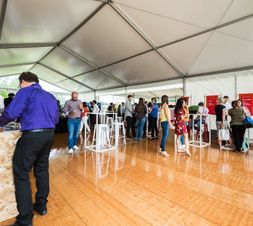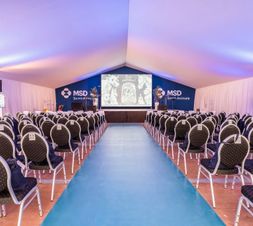How do you organise a roadshow for your company?
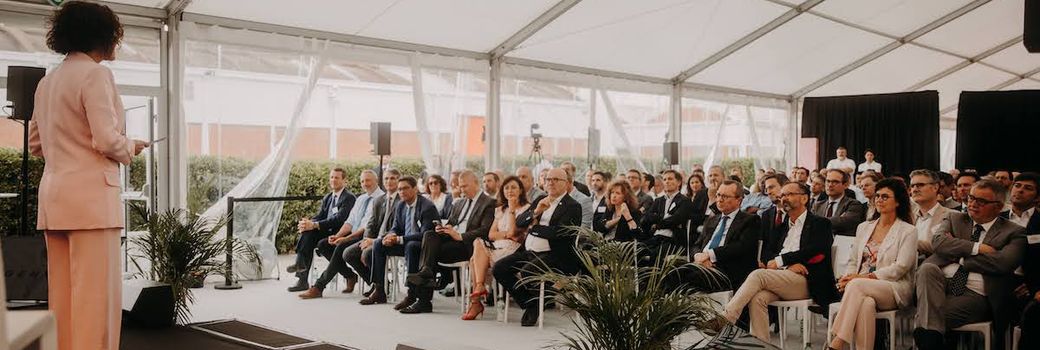
Why wait for Parisian trade shows to reach your target audience? A roadshow is one of the best marketing actions. This promotional tour allows your company to recreate physical contact with your prospective customers, a precious link that is becoming increasingly tenuous in the digital age.
To maximise the positive impact of such a corporate event, it requires rigorous organisation. Find out the key stages in preparing your roadshow.
What is an event roadshow?
Theroadshow, a concept widely adopted from the English-speaking world, embodies a refined strategy that companies deploy to showcase their new products or services in an enchanting way. This itinerant initiative unfolds in a series of meticulously arranged stages, during which the company team scours different localities in a limited time span.
Why organise an event roadshow?
1. Reaching a wider audience
Roadshows offer companies the opportunity to reach a diverse audience in different cities or regions. This approach avoids the geographical limitations of a single location and reaches potential customers who might not otherwise have been accessible. By travelling from one locality to another, you can capture the attention of a variety of people, strengthening your presence in a wider range of markets.
2. Creating links
Face-to-face interactions are a powerful way to build meaningful relationships with your customers. At a roadshow, participants have the opportunity to meet you, ask specific questions and get immediate answers. This personal communication creates a sense of authenticity and trust, crucial elements in establishing a lasting connection with customers.
3. Promote your products and/or services
A roadshow is an opportunity to showcase your products or services in a tangible way. Interactive demonstrations and hands-on trials will allow participants to see and feel the benefits of your offerings. This can help to dispel potential doubts and generate genuine interest among the audience, boosting conversions and sales.

4. Create a media buzz
The itinerant aspect of a roadshow can generate a effect of curiosity and excitement in the local media. Each stage of the roadshow can become a topic of interest for the local press, blogs and social media, increasing the visibility of your company and the event. This media coverage helps to extend the reach of the event beyond just the people attending.
5. Collecting data
Roadshows offer a valuable opportunity to gather information about attendees. You can get real-time feedback on your customers' preferences, their comments on your products and their specific needs. This data can be used to tailor your offers, personalise future campaigns and improve your customers' overall experience.
6. Raise your company's profile
By moving from city to city, you can increase your company's visibility and create a sense of constant presence with the public. Roadshow participants are likely toremember your brand because of the repetition of the event in different regions. This increased awareness can lead to wider recognition and more serious consideration of your brand in future purchasing decisions.
7. Expand your network
Roadshows bring together a diverse range of people, from customers to business partners and industry experts. These events provide an ideal setting for networking and professional exchanges. Informal interactions can lead to fruitful collaborations, the exchange of innovative ideas and the creation of long-term relationships.
How do you organise an event roadshow?
1. Define your objectives
Whatever the reason for organising a roadshow, the aim is to achieve one or more objectives. Whether it's a product launch, consolidating your brand image or improving your visibility, your roadshow must be in line with the message you intend to deliver.
While this type of event focuses mainly on a marketing strategy, some roadshows are more financial in nature. The latter offer managers the opportunity to meet future investors, sometimes taking them from fund-raising to a stock market flotation.
Your objectives form the basis for organising your roadshow. They guide you in your choice of speakers and help you define the events and demonstrations that will support your sales arguments;

2. Choosing the type of layout and budget
Each roadshow requires a different approach, depending on the objective. The needs are therefore different from one event to another. Depending on the number of participants expected at each of your stops, the choice of infrastructure is essential to the smooth running of your roadshow. While seminar rooms are frequently used for professional events, they are not always as close as possible to your target audience.
Some companies opt for a mobile bus or lorry, while others use shopping centres or regional trade fairs. But these alternatives have their limits and are not always suitable;
Why not go all out? Cleverly equipped marquees, such as sailcloth marquees, bamboo marquees, stretch marquees, awning or even pagodas, can be used to create a bespoke site featuring your company.
The budget allocated to your roadshow will therefore need to be defined according to your objectives and the means employed to achieve them.
3. Search for suitable sites
Once you've decided what form your roadshow will take, you need to select the stopover towns that will define your itinerary according to your activity and target audience. Next comes the search for the most suitable venues for your event.
When you meet up in the field, why not create a surprise by choosing a unique or even unusual venue? From public locations to charming estates, the choice is wide. In this way, you break the mould of traditional advertising campaigns, but above all, your brand will remain engraved in the minds of your consumers and employees for a long time to come.
To avoid any disappointment, find out beforehand about the various authorisations and tax constraints involved in your roadshow.

4. Organising logistics
A roadshow can't be improvised. Organising the logistics can be a real feat. Everything has to be anticipated to ensure that each stage is completed successfully, which is why it is absolutely essential to draw up a meticulous timetable. This should include:
- the allocation of sales staff or teams to different locations;
- the travel time;
- the set-up and dismantling times;
- the duration of each operation.
In addition to safety, the tour organisers must also plan for the teams' accommodation and catering.
The weather is also a factor, as are the regions visited. The time of year chosen for your roadshow must be conducive to its smooth running, and any climatic contingencies must be anticipated. Similarly, it's important not to overlook the topography of the location, which can have a considerable impact on your organisation.
5. Opting for the right communication strategy
Your communications strategy must be impactful, visible and consistent with your objective. It's the keystone to the success of your roadshow.
The choice of tools is essential both upstream and during your tour. Website, point-of-sale advertising, giveaways, signage, goodies, personalisation of your truck or infrastructure... After skilfully orchestrated teasing on social networks or other channels, your roadshow will be eagerly awaited and your target audience will be there.
In addition, by relaying key points and the progress of your tour in real time, you can communicate with a wider audience and attract more visitors.
6. Rely on a retro-planning tool
Retroplanning is the essential tool for organising your roadshow. Right from the start of your project, it gives you a clear overview and enables you to manage your timing perfectly.
Thanks to retroplanning, you can plan your roadshow in the best possible way, from A to Z. You can identify your needs, avoid unfortunate omissions and even anticipate unforeseen events. In short, you can keep a tight rein on your project, with complete peace of mind.
Our roadshow ideas
1. A themed roadshow
To maximise the impact of your roadshow, we recommend adopting a consistent thematic approach. Each stage of the roadshow could explore different aspects of the chosen theme in depth.
Let's take the example of the Glamping Tour which we organised in collaboration with Agence Volontiers for the Longchamp company. This distinctive thematic approach was successfully deployed at each stage of the Roadshow across different regions of the world. 'Glamping' is a form of accommodation that combines the luxury and comfort of a hotel stay with the immersive experience of outdoor living, it is a contraction of the words 'glamour' and 'camping'.
At each glamping-themed Roadshow event, the immersive experience has been carefully designed to immerse participants in a world of luxury with a country chic outdoor ambience. Elegantly appointed tents, top-of-the-range facilities and refined culinary experiences all reflected the glamping theme. An exceptional touch was added by inviting renowned influencers such as Léna Situations, who helped to highlight this unique experience.
The establishment of a theme helps to create a common thread throughout the tour, which will also help your event participants to remember this unique event.

2. A unique format
The choice of event format plays a crucial role in engaging your roadshow audience. You might consider offering a variety of formats to suit the preferences and varied schedules of your participants. Organising breakfast sessions offers the opportunity to start the day in an informative and interactive way, while cocktail evenings with elements such as mixologists can add a touch of elegance and conviviality to your events. Adapting formats to suit the different stages of the roadshow can help maintain the interest and enthusiasm of participants throughout the experience.



 Phone
Phone

